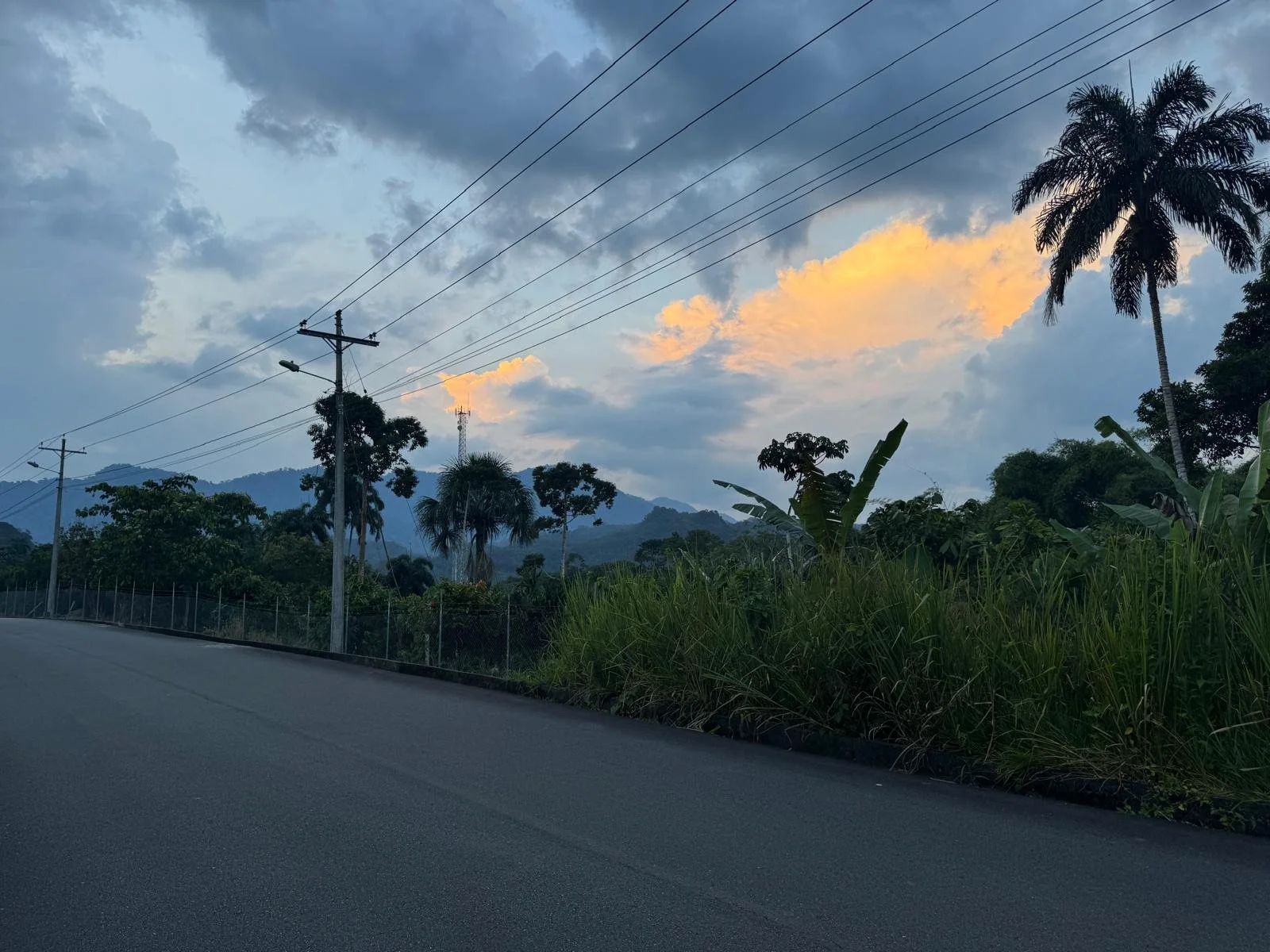Being a Program Director for Manna Project in Ecuador is an incredible experience. Not only have I learned a great deal about a new culture, but I’ve learned how to manage and work with a team and how to look at life with a deeper cultural understanding. I’ve loved this experience so much that I’ve decided to extend my time and stay another year! That being said, friends and family are constantly asking me “What is it you even do every day??” Well family, here goes!
7:00 am: Wake up to the sound of the neighbor’s roosters and the gas truck passing by our house. Decide I could use another hour to sleep so I put in earplugs and roll over!
8:00 am: Finally convince myself to get out of bed to start my day.
8:30 am: Leave the house after a nice breakfast of banana pancakes (a house favorite) and head to the local university ESPE, where I help give conversation classes.
9:00 am: Begin with an NPR Lesson in my ESPE class. We typically talk in English about different topics relevant to life as a university student.
11:00 am: Finish at ESPE and head to the San Luis mall to pick up groceries for Diabetes Club which I have tomorrow. Stop by sweet and coffee to rejuvenate with some iced Ecuadorian coffee!
12:00 pm: Return to the volunteer house and scrounge around the kitchen for my favorite Ecua lunch- chocho bean salad*!
1:00 pm: Sit in our living room watching the rain clouds come in while planning for my afternoon English class and making the recipe/lesson plan for Diabetes Club tomorrow afternoon.
2:00 pm: Head to the Library for a meeting about prep for our 5K, new programs, or events being planned at that time. Meeting must include serving of afternoon Guayusa tea**!
3:30 pm: Start shift for Teen Center. Spend time playing games like foosball and ping pong with kids waiting for their English classes to begin.
4:00 pm: Teach my Level 3 English class about past simple tense. We have conversations about what we did as children and play one of the kids’ favorite games- scattergories!
5:30 pm: Children get out of English class but parents are everywhere wanting to say hello and talk about their children. I lead “Kids Hour” a class for kids to have creative fun which includes arts and crafts or science experiments.
6:30 pm: Time to clean the library! We sweep and mop and make sure everything is looking nice!
7:00 pm: Take bus back to the volunteer house. Spend the time on the bus relaxing and chatting with local Ecuadorian children who recently got out of school about Manna and the fun activities we have at the Library.
7:30 pm: Arrive at the Manna house to a freshly prepared meal- a PD favorite- tacos! We sit down to eat together and share and laugh about our days. This is my favorite time of the day because we can reflect and really bond together as a group!
8:30 pm: The team decides we’re not ready to part ways for the night, so we play one of our favorite card games with some reggaetón music in the background.
10:30 pm: Remember I have to write a blog for Manna Project and finish a grant application! Regretfully, I leave my friends, head up to my room, put some music on my headphones and get to work!
11:30 pm: Finish my work and ask a friend to come to my room to watch Game of Thrones! Fall asleep mid-episode because after a day like this, who wouldn’t be tired?? Rest and start all over again tomorrow!
One of the best parts about my job with Manna Project is that every day is different. While this is an example of one day, the next could change completely. While my days are full and busy, I wouldn’t change it for a thing!
*ChoChos are typically consumed in Ecuador in the form of Chevichochos, (lime with protein packed white beans, toasted corn kernels, and a small salad mix of onions and tomatoes). Instead, I make a big traditional western salad with lettuce, cho chos, cucumber, avocado, and balsamic dressing!
**Guayusa is a tea, which comes from the Amazon region of Ecuador. It has about as much caffeine as a cup of coffee and I find it to be super fresh and clean - I’m surely addicted!
Does this life sound like fun to you? Apply to be a Program Director today to make this a day in your life!




















